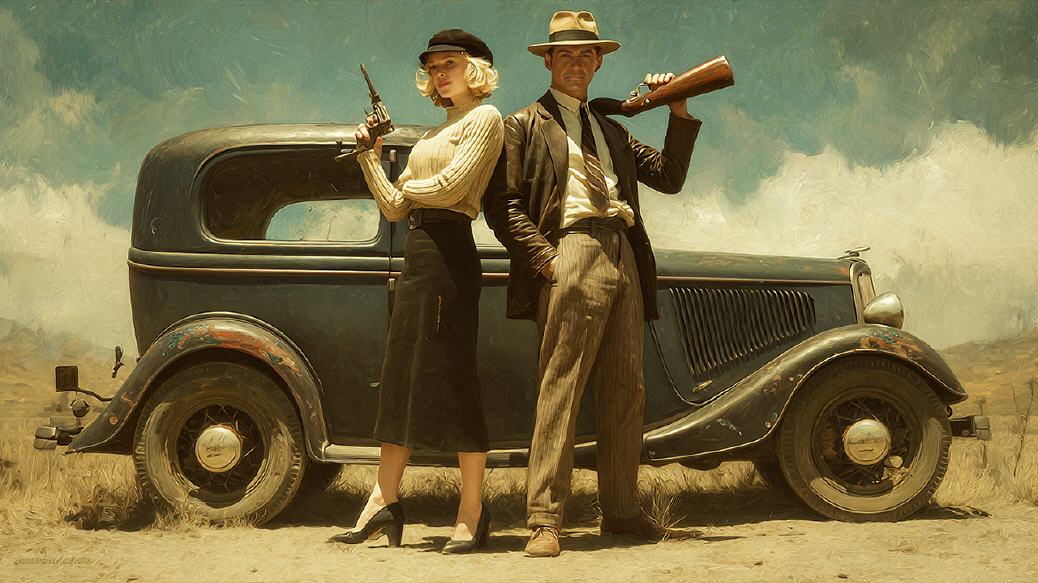GREED

Although often portrayed as romantic outlaws, Bonnie and Clyde were driven by more than love or rebellion. At the core of their choices lay greed, not only for money, but for power, control, and a life beyond poverty and insignificance. Their crimes were acts of defiance, but also of desire: to take what they felt the world denied them. Greed, disguised as freedom, as passion, as pride, pushed them further into violence, until it consumed them both.
Thrill to Kill (Bonnie Parker’s final song)
They paint me cruel with a cold-hearted grin,
but I only turned bad, ‘cause they boxed me in.
no ribbons, no lace, just gunpowder and grit,
and a heart, that got broke, but refused to quit.
I danced with the devil in getaway shoes,
never had anything, except nothin’ to lose.
I followed my man down the wrong kind of hill,
where I found out there´s nothing like the thrill to kill.
I’ve had my fun, if I die tomorrow,
and I’ve lived all I ever wanted to live,
I’ve spent my days in a hail of bullets,
but never asked for mercy,
and no one to forgive.
They call us cold-blooded killers,
they say we are heartless and mean,
but I say this with pride, that I once knew Clyde
when he was honest, upright and clean.
but what can you do, if you´re ruined,
by bankers and by bureaucrats,
yes, our nature is raw, and we do hate the law,
and those stool pigeons, spotters, and rats.
I’ve had my fun, if I die tomorrow,
I’ve lived the life I wanted to live,
I’ve spent my days in a hail of bullets,
but I don´t need anyone, or god to forgive ...
no preacher or judge clear or clean my name,
If I turned bad, it was my free will,
You say I’m to blame,
then shout out my shame —
but I was born for the thrill to kill.

Bonnie Parker (1910–1934) and Clyde Barrow (1909–1934) were a young couple from Texas who became legendary for their crime spree across the central United States during the early 1930s.
They met in 1930 and quickly fell in love. At the time, Clyde was already involved in petty crimes, but after a brief stint in prison, he escalated to more serious offenses. Bonnie, though a former waitress and poet, joined him willingly, and together they formed the core of the Barrow Gang, which included several of Clyde’s family members and friends.
From 1932 to 1934, they robbed banks, gas stations, and small stores. They were known for their fast getaways, use of stolen cars (especially the powerful Ford V8), and violent encounters with police. Their notoriety grew through sensational newspaper stories and staged photographs, including the famous image of Bonnie with a cigar and pistol.
Despite the romanticized image, they were involved in numerous shootings and are believed to have been responsible for the deaths of at least nine law enforcement officers and several civilians.
Their crime spree ended on May 23, 1934, when they were ambushed and killed by a posse of Texas and Louisiana lawmen near Gibsland, Louisiana. They were riddled with over 100 bullets while driving a stolen Ford V8. They were 23 (Bonnie) and 25 (Clyde) years old.
Legacy:
Bonnie and Clyde became symbols of rebellion, doomed romance, and the lawlessness of the Depression era. While their actual crimes were brutal, public fascination turned them into folk antiheroes — a mythologized mix of love, violence, and tragic destiny.